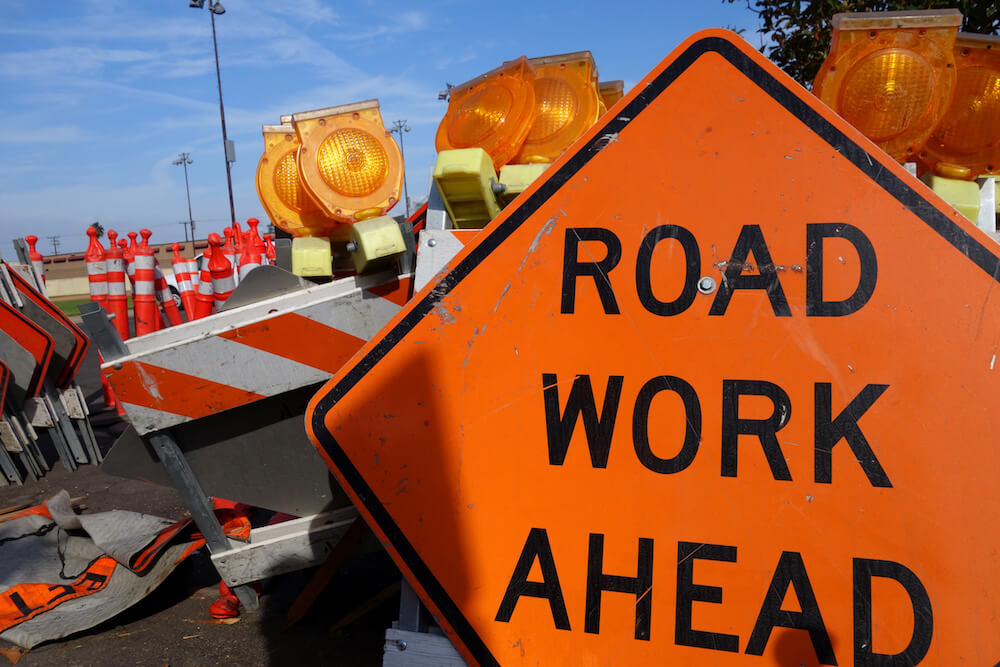If you drive a truck for a living, being safe on the road is crucial. You need to be constantly paying attention and taking care while operating a CMV. Your truck is just so much bigger than a passenger car. And work zones can be particularly hazardous. If there’s road work going on, that requires even more caution and care. Here are a few tips for navigating work zones and avoiding a disaster.
6 tips for driving a truck in work zones.
1. Know what you’re up against.
You can’t avoid danger if you don’t know where that danger lies. You have to know what you’re looking out for so you can take care not to let these things trip you up. It’s probably a good idea to keep a lookout for the following potential hazards that exist in work zones…
Shifting lanes. When you’re going through work zones, the lanes might move or shift in odd ways.
Sudden braking. People might have to slam on the brakes with little notice.
Surfaces. The roads might be torn up a bit, and they might be uneven. That could be treacherous, so pay attention so you don’t get caught off-guard.
Workers/Equipment. You have to pay special attention to any road workers and their equipment.
Drivers making strange decisions. Passenger cars can make some very questionable choices when confronted with a work zone obstacle course.
Be aware of these hazards and look out for them. Work zones can be tricky, so take it easy and be on high alert.
2. Slow it down.
Don’t go hurtling through a work zone at high speed. You won’t have enough time to respond to obstacles that arise. Just take your time, ease off the gas, and go slow. It never hurts to be careful, especially when there are construction workers, pylons, and machinery around. (Especially when you’re, you know, driving a very large truck.)
3. Have extra following distance.
You’ve also got to give yourself some extra following distance. That way you have some extra space if you have to stop suddenly. Since trucks are so heavy and big, it takes time for them to stop. Speaking of which, you should be prepared to stop at a moment’s notice. You never know what could happen.
4. Look out for work zone signs.
There might be work zone signs and signals, and you need to keep an eye out for them. The signs will tell you important information that you need to know. And when you do see a sign, pay attention to it. They’re there for a reason, after all. It’s not just decoration. So, let the signs guide your driving.
5. Don’t forget your blind spots.
You also need to be aware of what’s happening in the truck’s blind spots. Passenger cars also do weird things, so be extra cautious. Be sure to be looking ahead, too, and scanning for any changes in the flow of traffic. That way you can be proactive and not have a panicky moment when something comes up. Know what blind spots exist around your vehicle and adjust your driving accordingly.
6. Be watching for workers and flag crews.
It’s also extremely important to pay special attention to the construction crews and road crews that might be around. Where there’s a work zone, there are probably, well, workers. And these people are just trying to do their jobs. So, be especially cautious. Even though the truck is high off the ground, you need to be scanning the roadside for people.
Work zones can be hazardous, which is why it’s important to be particularly careful any time there’s roadwork going on. Know the potential risks, slow down, increase your following distance, and pay attention to signs. And be extremely vigilant and watchful for road crew and workers. Stay safe out there!
It’s also really important to have truck insurance that’s suited to your business. Our team would be happy to help you with that. We can help you get the coverage you need to protect your business. And even better, we like to make insurance easy. Get started with your quotes by filling out our online form, giving us a call, or messaging us. We would be delighted to be of assistance.
Source:
https://www.fmcsa.dot.gov/ourroads/tips-truck-and-bus-drivers



